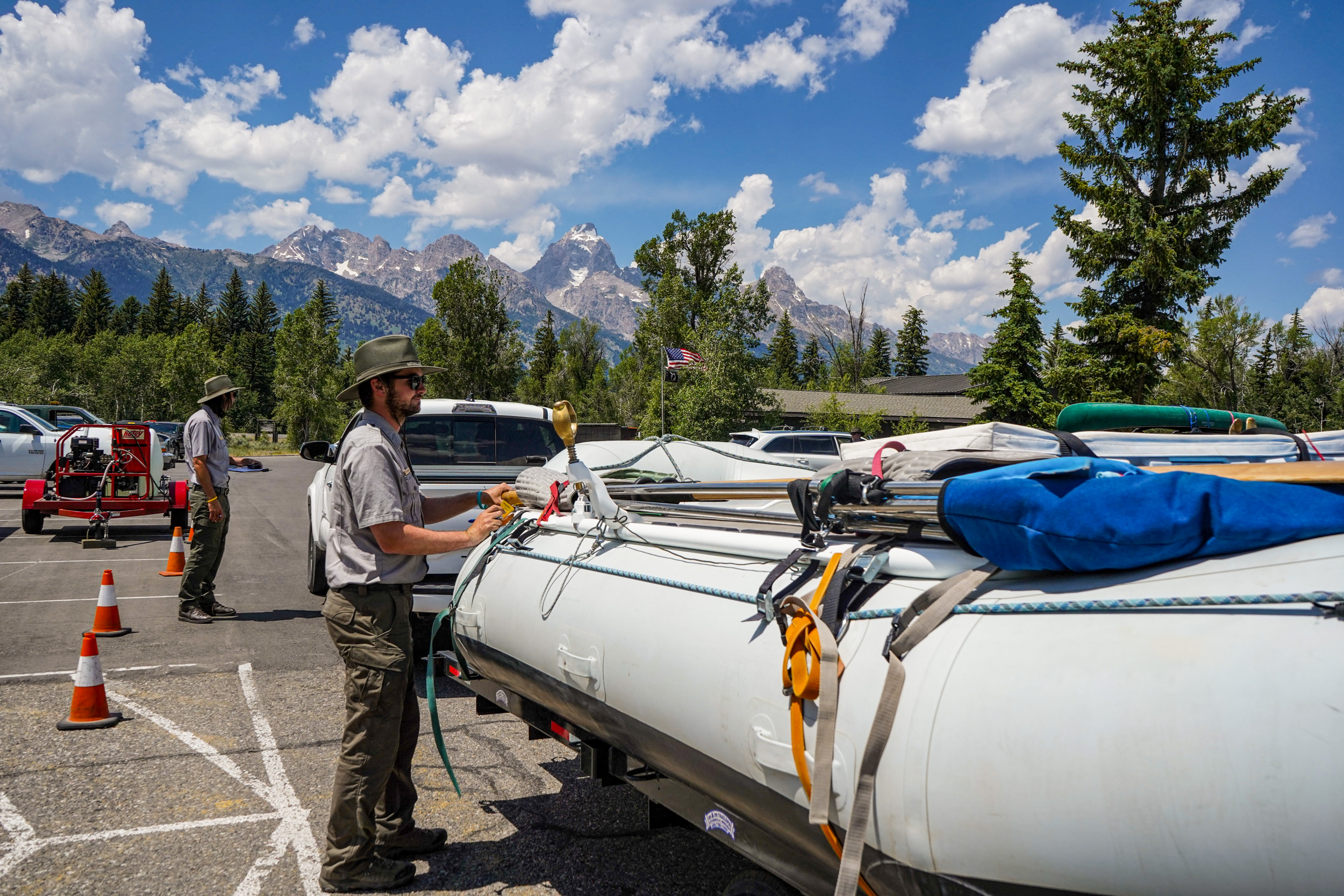News Release
You are viewing ARCHIVED content published online before January 20, 2025.
Please note that this content is NOT UPDATED, and links may not work. For current information,
visit https://www.nps.gov/aboutus/news/index.htm.

NPS Photo/J. Bonney
|
Subscribe
|
Contact: Valerie Gohlke, 307-739-3393
Contact: C.J. Adams, 307-739-3431
MOOSE, WY — Local residents and visitors to Grand Teton National Park are reminded to do their part to prevent the spread of aquatic invasive species (AIS) and have their watercraft inspected before launching on park waters. Boaters and anglers have a responsibility to drain, clean, and dry their vessel and fishing gear before use in the park.The park is working in partnership with the Wyoming Game and Fish Department to provide education, watercraft inspections, and monitoring to prevent the spread of aquatic invasive species in Wyoming.
All watercraft entering the state of Wyoming, including Grand Teton National Park, must be inspected by an authorized AIS inspector prior to launching on waters within the state. Recreationists transporting any watercraft, including motorized and non-motorized vessels such as canoes, kayaks, stand-up paddleboards, and inflatables are required to stop at every inspection station in Wyoming and Grand Teton National Park.
Park inspection stations are in Moose, adjacent to the post office, and Moran, north of the Moran Entrance Station. The stations open for the season Saturday, May 20, and will operate daily 7:30 a.m. to 4:30 p.m. through September 10.
Watercraft that are dirty or have standing water will require a more in-depth inspection and potentially decontamination. As in past years, park boat inspectors are issuing an inspection verification card upon completion of the inspection. Frequent visitors should carry this card with them to expedite the inspection process during future visits.
Aquatic invasive species often have wide-spread economic, recreational, and ecological impacts. They can cause millions of dollars in damage to boats, marina infrastructure, and hydro-power facilities. Once an infestation has occurred, it requires costly cleaning regimens, repairs, and maintenance to infrastructure. A single boat or piece of gear that has not been properly drained, cleaned, or dried could introduce non-native species and have serious and irreversible ecological consequences.
It is much cheaper to prevent invasive species from entering the park than it is to fund mitigations after an invasive species has established itself. Boaters and anglers should follow these steps after contact with any body of water:
- Drain your boat bilge, compartments such as live wells, ballasts, etc. in a location such as a flat paved, dirt, or gravel area, away from all surface waters or drains that lead to surface waters. Eliminate water from all equipment before transporting anywhere. Juvenile aquatic organisms can be too small to see with the naked eye and even small amounts of water can potentially harbor aquatic “hitchhikers.”
- Clean and remove all visible mud, plants, fish, organisms, or debris from boats, trailers, and other equipment, including waders, boots, clothing, and nets before you enter a new body of water. It is best to use high-pressure, hot water to clean your boat, trailer, and gear in a location where wash water does not enter another waterway.
- Dry all equipment thoroughly, for several days ideally, before entering new waters.
In 2022, Grand Teton National Park recorded having 24,148 privately owned watercraft pass through the park's inspection stations and park staff conducted 32 decontaminations on high-risk boats. Additionally in 2022, zebra mussel infestations were documented in the Pactola Reservoir in South Dakota (less than 30 miles from Wyoming's border) and Highline Lake in Colorado. These lakes are within on day's drive to Grand Teton National Park.
All boats, including canoes, kayaks, stand-up paddle boards, and inflatable watercraft, are required to have a park boat permit prior to launching on any water in Grand Teton. A park non-motorized boat permit is $25, and a motorized boat permit is $75. Park boat permits can be purchased online at Recreation.gov or at the Craig Thomas Discovery and Visitor Center in Moose and the Colter Bay Visitor Center, both open 9 a.m. to 5 p.m. daily. The permit is valid through the calendar year in which purchased. The mail-order system allows boaters to plan ahead and have their permit mailed directly to them within two weeks.
A Wyoming State Aquatic Invasive Species decal is also required and can be purchased online or from a variety of local vendors.
For additional information on boating in Grand Teton, please visit the park’s website.
Last updated: May 15, 2023
